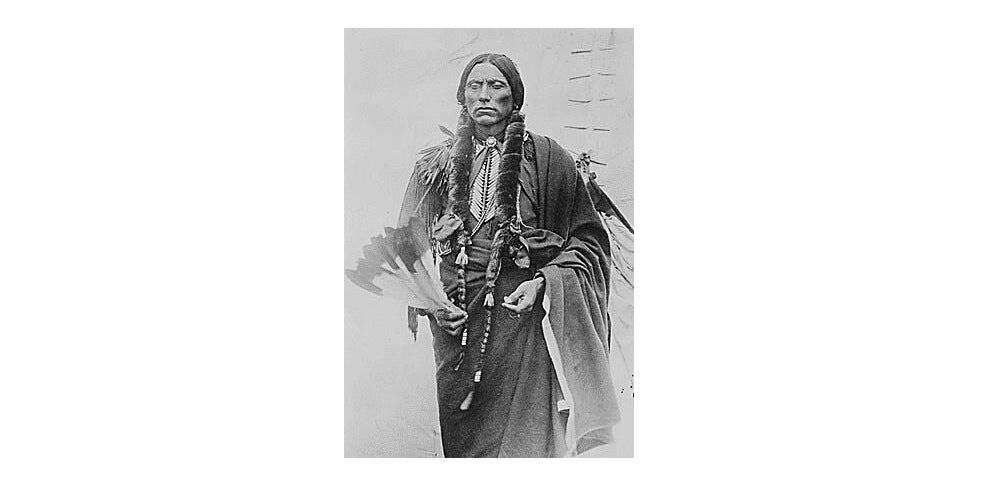
Here we delve a little deeper into some of the facts about who the Native Americans are – specifically the Comanche, who were historically renowned by other Native Americans as the most warlike Native Tribe.
Who are the Comanche?
The Comanche are a Native American Tribe that traditionally inhabited the southern Great Plains in the 1700s and 1800s. They call themselves “Nermernuh” or “The People”; the word “Comanche” derives from a Ute word “kimantsi” that translates to “enemy” or “anyone who wants to fight me all the time”. The Comanche language itself is a northern branch of the Uto-Aztecan languages.
At the end of the 1800s, there were more than thirteen bands of Comanche; the five major bands were:
- Yamparika (Yap/Root Eaters)
- Kotsoteka (Buffalo Eaters)
- Penateka (Honey Eaters)
- Nokoni (Wanderers)
- Quahadis (Antelopes)
The Comanche were originally part of the Wyoming Shoshone people. They broke away from the Shoshone and migrated south - through Wyoming, Nebraska, Colorado, Kansas, New Mexico, Texas, and Oklahoma - by systemically attacking and displacing other tribes, including driving the Apache entirely from the southern Plains. During the Frontier era, the Comanche were considered the fiercest and most dangerous. They raided other tribes and settlers for horses, material goods, and human captives, with their range extending as far south as the location of modern-day Durango, Mexico.
Comanche society was noted for organized autonomous bands formed on kinship. The Comanche society and clan system were patrilineal and patrilocal. Men wore their hair long and in two braids, while women cut their hair short. There was no single overseeing Comanche Chief according to tribal norms.
Buffalo played a huge role in their economy, and they made and traded everything from sinew thread to teepee covers and robes made from every part of the animal.
The nomadic equestrian lifestyle of the Plains Indians was implemented by the Comanche. They were extremely powerful and among the first Native American people to acquire, use, and successfully breed horses, which they sourced from the Spanish settlers. (Before this, the Comanche used large dogs to transport their bison hide tents). They became highly skilled in fighting battles on horseback – a skill unique to their tribe and which made them even more difficult to overcome in battle. By 1795, the Comanche sold horses and mules to Anglo-American traders and they also supplied them through Osage, Shawnee and Seminole middlemen.
Quanah Parker was a famous Comanche war leader. A member of the Quahadi band, and born around 1850, he was the firstborn son of Quahadi chief Peta Nocona and Anglo-American Cynthia Parker, who had been kidnapped as a child of just nine years of age by the Nokoni, and had been adopted and since assimilated into that tribe.
In the early 1870s, and in response to the capture of several Kiowa Chiefs, the Comanche joined forces with the Kiowa and the Southern Cheyenne against the US Army forces which were rounding up or killing those Native Americans who were not settled on designated reservations.
Quanah Parker was dominant in the Red River War of 1874 (during which the US Army sought to displace the Comanche, Kiowa, Arapaho, and Southern Cheyenne from the Plains) before the American government’s decimation of buffalo populations forced the peaceable surrender of the Comanche; Parker led his people to the Comanche, Kiowa, and Apache Reservation at Fort Sill, Oklahoma.
Following his settlement othe Reservation, Quanah contacted and spent time with his mother’s family (whom she had, as an adult, chosen not to rejoin, having assimilated fully with the Comanche). He studied English, farming practices, and Western culture.
Parker was never elected Chief by his own people but was appointed by the US government as the Comanche Nation’s principal Chief. He both encouraged his people to adopt Christianity, while also advocating for a Native American Church and peyote religion as an alternative. (He had been introduced to peyote by a Mexican healer (curandera) after being gored by a bull). For Comanche religious and spiritual practices, he fought hard for the legalization of peyote.
He married two wives in 1872; the first was the daughter of a Mescalero Apache Chief. After a year of marriage, she asked to return to her home as she struggled with the Comanche language. Quanah permitted this. His second wife of 1872, with whom he eloped, was the daughter of a Penateka Comanche subchief. Their marriage united two bands and formed the largest single Comanche force. He also married six more women in his lifetime.
Parker was elected Lawton, OK’s deputy sheriff in 1902, and after he passed away in 1911, he was called “The Last Comanche Chief”.
Some Comanche criticized Quanah Parker for adopting some European-American methods, including for becoming a rancher. But as a proud Comanche man, he wore his hair in braids throughout his lifetime and maintained many native customs.
The Comanche Nation Today
The Comanche Nation is known as “The Lords of the Plains”. They are governed by the Constitution of the Comanche Nation and a Tribal Council. There are around 17,000 enrolled members of the Comanche Tribe and 7,000 live on or near the Fort Sill Reservation area. Tribal members must have at least one great-grandparent of full Comanche lineage. The Comanche Nation has its own Department of Higher Education.
In terms of Native American jewelry, the Comanche favored metal bracelets and strands of brightly colored glass beaded necklaces. Beading is a hallmark of Comanche design. Before European traders brought glass beads, they used beads made from wood, copper, teeth, animal bones, stones, and turquoise.
We have some beaded Native American jewelry at Indian Traders – more specific to the Navajo, check it out now!
